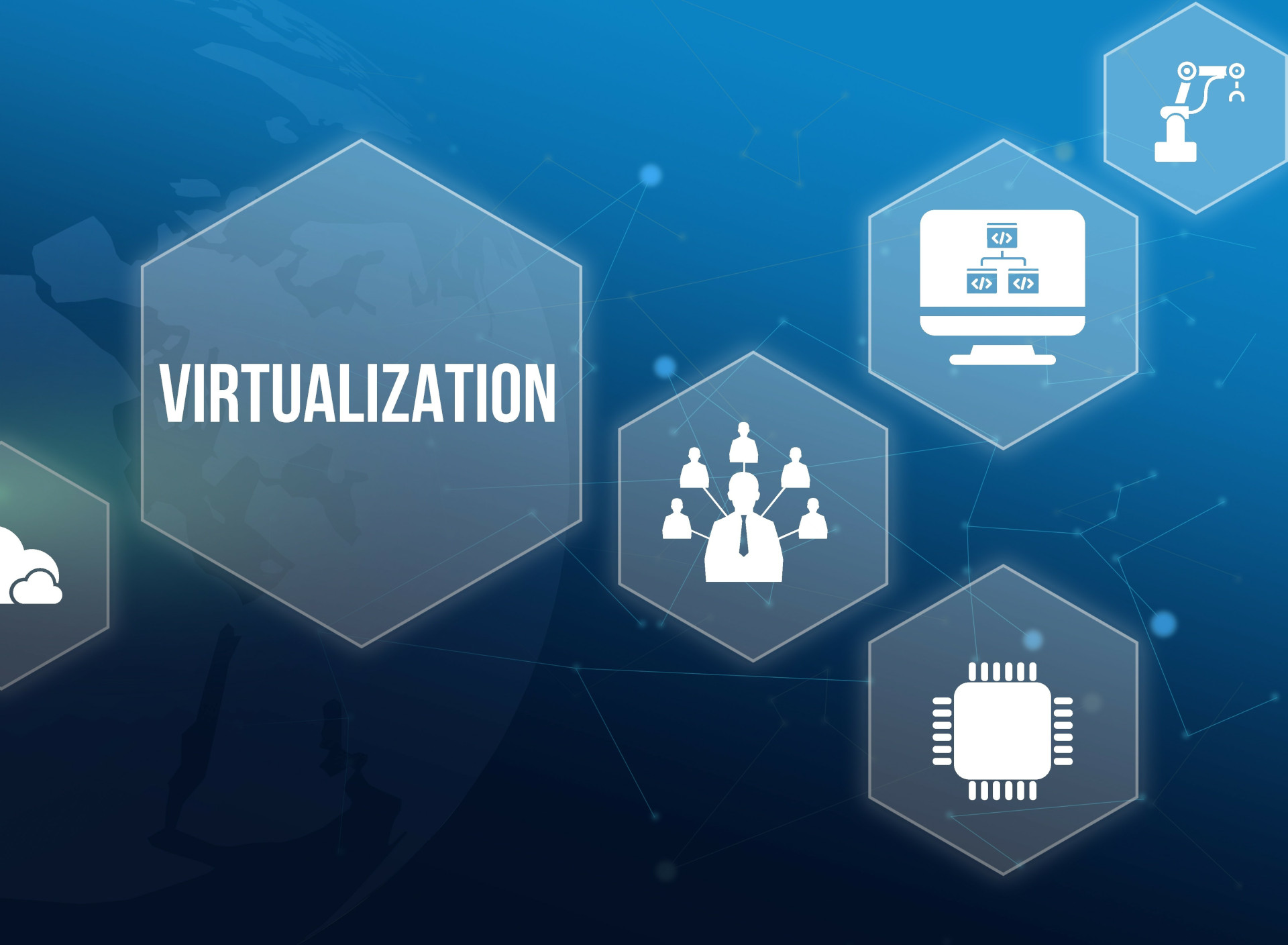Cloud Hosting
The difference between a container and a virtual machine | Storm Internet

The difference between a container and a virtual machine is that virtual machines virtualise physical hardware resources (e.g. disk space, RAM, CPU) while software containers are a form of operating system virtualisation. Both of them can help you make better use of available resources and deliver greater operational fluidity and flexibility.
But, it isn’t a case of choosing containers over virtual machines. Both have unique benefits and use cases, which means the choice between the two should be strategic. Below we provide a quick introduction to each to help you choose the right tool for the job.
What is a virtual machine?
A virtual machine or virtual server is, in simple terms, a server created by software called a hypervisor. Much like physical servers, virtual servers also have resources like disk space, memory (RAM), and one or more CPUs. But unlike a physical server, these aren’t hardware components. Instead, these resources have been ‘reserved’ (a.k.a. ‘abstracted’) from available hardware resources.
Virtual machines enable more efficient use of hardware resources. Multiple virtual machines can be run on one physical machine or, in the case of the cloud, a collection of physical machines. You can learn more about virtual servers and virtualisation software in a previous post: What are virtual servers?

Logos of popular hypervisor brands: Hyper-V, VMWare, and VirtualBox
Where are virtual machines used?
Virtual machines have come a long way, and have become a ubiquitous form of computing – not only for business or commercial uses, but also for personal use cases. For example, I’m currently using Ubuntu as a daily driver, but have a Windows 11 virtual machine set up in Oracle’s VirtualBox software which I fire up when I need to use Illustrator.
But that’s rather pedestrian compared to some of the other uses of virtual machines, such as:
Hosting: Perhaps one of the most common uses of virtual machines is in the hosting industry. Hosts can create and run a number of virtual machines / virtual servers per physical server. These virtual servers can be used for a variety of purposes, such as running websites and/or applications, streaming services, VPNs, file sharing servers, and more.
DevOps: Virtual servers are popular in development environments since they allow for near-instant deployment of configured development, testing, and production servers from custom templates.
Virtual Desktop Infrastructure (VDI): With a VDI users can access desktops from just about any internet-connected touch-enabled device with a screen. For organisations with many remote workers, this can ensure easier management of remote devices and reduce the security risks associated with personal computing devices.
What is a container?
Take a moment to remember the last app you downloaded. Chances are it came in a ZIP file or some other type of compressed format. For the app to work all those files have to be extracted to a specific location on your computer. Not only that, the app also needs the proper operating environment (e.g. Windows) and software modules / libraries installed in that environment to run.
Similarly, containers provide a way to package software. But unlike typical software packages, containers also contain all the required dependencies (modules, libraries, etc.) to help that app run. This means containers can easily be moved between systems and even operating systems as long as the kernel of the operating system is compatible with the container. A Windows-based container can run on some other Windows operating systems, while a container created in Ubuntu will likely run on Redhat systems. However, a Linux container typically won’t run on Windows, and vice versa.
Containers can be changed and updated, and can interact with other containers.
Where virtual servers need hypervisor software, containers are built on top of software referred to as ‘container runtimes’, such as Docker, containerd and rkt.

Logos of popular container management software/services brands: Kubernetes, Docker, and AWS
Where are software containers used?
Containers are typically used in scenarios where application portability and efficient resource usage are important.
You can, for example, run WordPress in a container – and it would be a good idea to do so if you want to develop locally, and then move the WordPress container (with your finished website) to a cloud server for production.
Since the container contains all necessary dependencies, you won’t have to deal with configuration issues on the remote server. Containers have grown in popularity in recent years, and not just because you can use it to run WordPress. Some of the more prominent use cases of containers include:
Microservices: if you’ve spent any time reading about containers, you’ll have come across the term ‘microservices’. Microservices are services that exist independently but interact with other services to work towards a common goal. For example, in a monolithic CRM application you might have client-related functions, invoicing functions, lead management functions, etc. But the same application as a microservices architecture could see client management as a one container / service, invoicing as a container / service, and so on.
DevOps: Containers are widely used in development environments. One of the biggest advantages in this use case is that developers know that the application will run the same wherever they are deployed, accelerating the application development cycle. This is also the reason why containers are widely used in continuous integration and delivery (CI/CD) pipelines.
Legacy applications: Since containers include all necessary software dependencies, organisations are using them to “lift & shift” legacy applications into more modern operating environments, like cloud servers.
Benefits compared: Virtual machines vs containers
| Virtual machine | Container | |
|---|---|---|
| Cost | VMs are more affordable than physical servers, especially when run in the cloud. Costs typically depend on resource usage. | Much like virtual machines, containers are typically billed based on resource consumption. |
| Scalability | Virtual machines can be scaled up or down. This means that resources such as disk space, memory, and processing power can be added or removed with the click of a button. When these resources are properly managed (added when needed, removed when not needed), virtual machines can dramatically reduce computing costs. | Container scaling refers to the creation of replicas to meet workload demands. A replica is a new instance of a container app, and can easily be moved to another node (physical server / virtual machine) to control usage of system resources. |
| Portability | Virtual machines consist of the entire operating system as well as all additional software that has been installed. As such virtual machine images can become large. | Containers contain only the application and its software dependencies. Compared to virtual servers, containers are small in size, making them highly portable. |
| Flexibility | Much like a physical server, a virtual machine has to be configured for use. Configured virtual machines can be saved as templates, meaning that future systems that require the same configuration can be deployed in a few clicks. This can dramatically speed up development and production cycles. | Containers are configured applications which are packaged and deployed. They can be configured to run in different environments to meet different needs – e.g. local development, cloud-based testing, and pushed to production on a dedicated server. |
| Security | Virtual machines are isolated from each other as well as the host operating system. If one virtual machine on the same cloud instance is compromised, it won’t affect other virtual machines on the same instance, or the host servers. | Containers offer isolation from other containers or apps on the host system. However, due to their close runtime proximity to the host OS, unsecured containers may leave the host operating system exposed, and therefore also endanger other containers. As with all software, the level of security is dependent on skill. |
| Efficiency | Early virtual servers were created to make more efficient use of system resources. Multiple virtual machines can be run side-by-side on a physical machine, each with only the needed resources to satisfy operating system overhead and to perform its required tasks. | Containers will only consume the resources they need to run. This can lead to resource underutilisation where the container typically only runs light workloads. Where containers consume more resources than available, they can be replicated to other servers to balance loads. This is achieved with container management software. |
| Availability | Virtual machines run in the cloud are more resilient to hardware failures; when one hardware component or an entire physical machine fails, another can take its place without causing any disruption. Multiple virtual machines can also be configured for high availability: when one fails for any reason, another can take its place without causing any disruption. This is called automatic failover. | Containers are dependent on the availability of the host system. |
Containers vs. Virtual machines: Which should you use?
There is quite a lot of overlap between software containers and virtual machines: many of the apps that can be run in containers can be installed and run on virtual machines. The reverse is also true. But with that said, there are some clear reasons to choose either a container or a virtual machine:
- You’ll need a virtual machine to host your containers
- Choose a virtual machine if your software has specific hardware resource requirements
- Choose containers if portability between different environments is important
- Choose containers for more efficient usage of virtual machine resources. Use container management software to dynamically create virtual machines to scale your application horizontally
Need more information? Find out how fully-managed virtual machines or containers can benefit your business. Get in touch.
Speak with a Storm Expert
Please leave us your details and we'll be in touch shortly
A Trusted Partner








